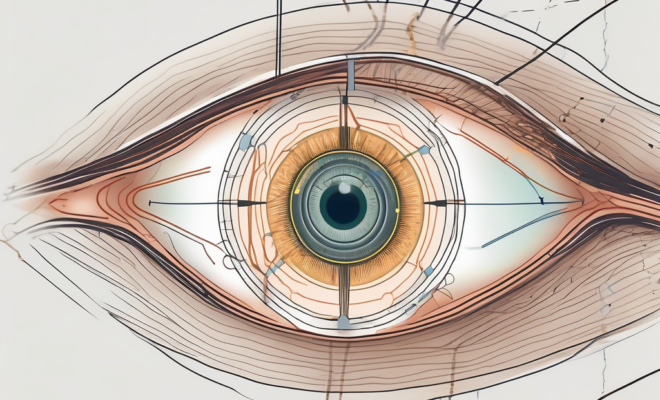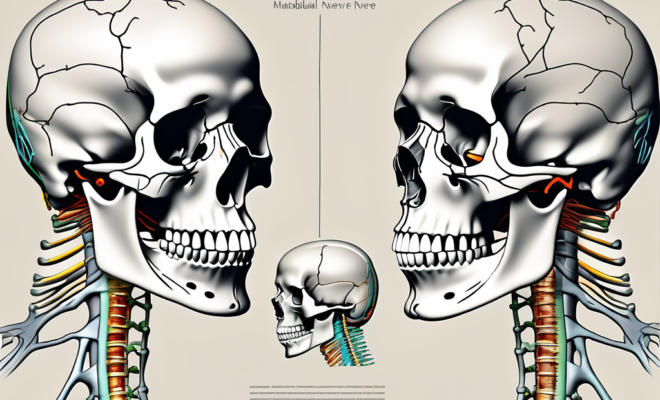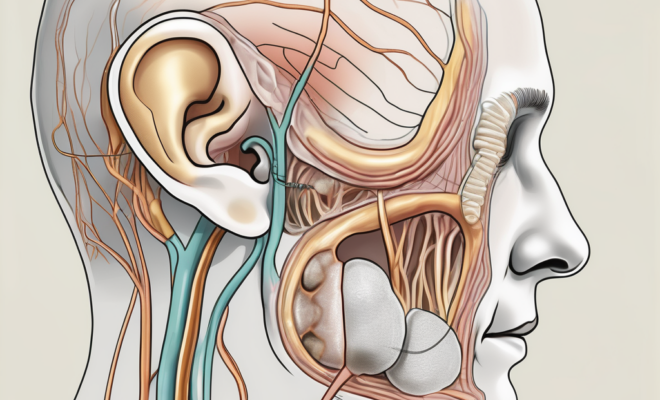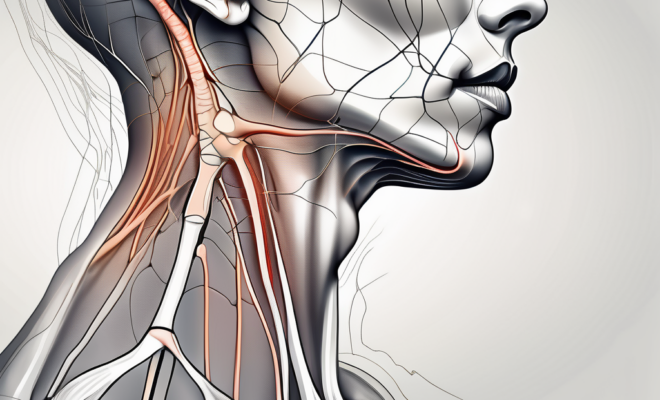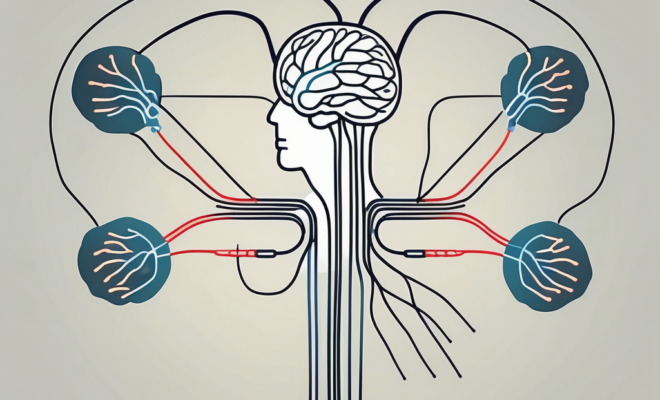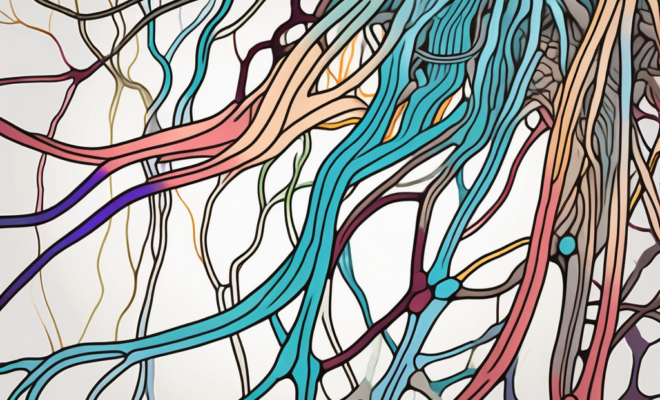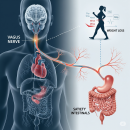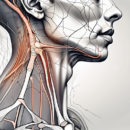The Role of Parasympathetic Nerves in the Body

Parasympathetic nerves play a crucial role in maintaining the body’s homeostasis by regulating various bodily functions. Understanding the intricate workings of the parasympathetic nervous system is essential for comprehending the complexity of human physiology and potential therapeutic interventions. In this article, we will explore the anatomy, functions, and health implications of parasympathetic nerves. By delving into the fascinating world of neurobiology, we hope to shed light on the significance of these nerves in overall well-being.
Understanding the Nervous System
Before we delve into the specific role of parasympathetic nerves, let’s briefly review the fundamentals of the nervous system. The nervous system is a highly intricate network of specialized cells, known as neurons, which transmit electrochemical signals throughout the body. It is composed of two primary components: the central nervous system (CNS) and the peripheral nervous system (PNS).
The CNS, comprising the brain and spinal cord, serves as the command center for all bodily functions. This intricate system processes sensory information, initiates motor responses, and plays a crucial role in cognitive functions such as memory and learning. The spinal cord, a vital part of the CNS, acts as a conduit for transmitting signals between the brain and the peripheral nerves, enabling swift reflex actions without direct input from the brain.
The Central and Peripheral Nervous Systems
In contrast, the PNS consists of nerves that extend beyond the brain and spinal cord, acting as a communication link between the CNS and the rest of the body. These peripheral nerves are responsible for transmitting sensory information from the body to the CNS and carrying motor commands from the CNS to the muscles and glands, allowing for voluntary and involuntary movements.
The PNS can be further divided into the somatic nervous system, which controls voluntary movements such as walking and talking, and the autonomic nervous system, which regulates involuntary bodily functions like heart rate, digestion, and breathing. The autonomic nervous system operates autonomously, ensuring that essential physiological processes continue without conscious effort.
The Autonomic Nervous System: Sympathetic and Parasympathetic
The autonomic nervous system consists of two branches: the sympathetic nervous system and the parasympathetic nervous system. While the sympathetic system prepares the body for action and stress responses by increasing heart rate, dilating airways, and releasing stress hormones like adrenaline, the parasympathetic system promotes relaxation and restoration. This branch of the autonomic nervous system conserves energy, slows the heart rate, stimulates digestion, and facilitates restful activities such as sleep and digestion.
The Anatomy of Parasympathetic Nerves
Now that we have familiarized ourselves with the broader context of the nervous system, let’s focus on parasympathetic nerves specifically. The anatomy of parasympathetic nerves comprises distinct structures and pathways that enable their vital functions.
Parasympathetic nerves are a crucial part of the autonomic nervous system, responsible for regulating involuntary bodily functions such as digestion, heart rate, and glandular secretions. These nerves work in opposition to the sympathetic nerves, creating a balance that maintains homeostasis in the body.
Origin and Pathways of Parasympathetic Nerves
Parasympathetic nerves originate from specific regions of the CNS, including the cranial nerves (located in the brain) and the sacral spinal nerves (located in the lower part of the spinal cord). From these origins, the parasympathetic nerves travel to various target organs in the body along specific pathways, ensuring precise control over bodily functions.
The cranial nerves responsible for parasympathetic functions include the oculomotor nerve (III), facial nerve (VII), glossopharyngeal nerve (IX), and vagus nerve (X). Each of these cranial nerves has parasympathetic fibers that innervate different organs and structures, allowing for the regulation of diverse physiological processes.
Key Parasympathetic Ganglia and Their Functions
Along the pathways of parasympathetic nerves, specialized clusters of neurons called ganglia are present. These ganglia serve as important processing centers, allowing for the integration and coordination of signals between the CNS and the target organs. Different ganglia control specific functions, playing a vital role in the regulation of processes such as cardiac activity, digestion, and eye function.
The two main types of parasympathetic ganglia are terminal ganglia, located near or within the target organs, and intramural ganglia, found within the walls of the organs themselves. These ganglia contain cell bodies of postganglionic neurons, which transmit signals from the preganglionic neurons originating in the CNS to the effector organs.
The Functions of Parasympathetic Nerves
Parasympathetic nerves play a crucial role in maintaining the delicate balance of bodily functions. Their functions encompass various aspects of physiological regulation, including the renowned “rest and digest” response, control of heart rate and digestion, and influence on eye function and salivation.
Rest and Digest: The Parasympathetic Response
One of the most well-known functions of parasympathetic nerves is the promotion of the “rest and digest” response. In contrast to the fight-or-flight response facilitated by the sympathetic system, parasympathetic activity reduces heart rate, conserves energy, and enhances digestion. This response is essential for initiating and maintaining a state of relaxation, allowing for optimal nutrient absorption and restoration of bodily resources.
Parasympathetic Control of Heart Rate and Digestion
In addition to the overall “rest and digest” response, parasympathetic nerves intricately regulate heart rate and digestion. By releasing acetylcholine, a neurotransmitter, parasympathetic nerves slow down heart rate and enhance the digestive processes, ensuring efficient nutrient breakdown and absorption. Dysfunction or imbalances in parasympathetic control can lead to conditions such as bradycardia or gastrointestinal disorders.
Parasympathetic Influence on Eye Function and Salivation
Another remarkable aspect of parasympathetic regulation lies in its influence on eye function and salivation. The parasympathetic nerves control the constriction of the pupils, allowing for precise adaptation to different lighting conditions. Furthermore, parasympathetic activity stimulates salivary gland secretions, facilitating optimal digestion and lubrication of oral tissues.
Moreover, parasympathetic nerves also play a role in regulating other bodily functions. For example, they are involved in controlling bladder function, ensuring proper voiding and preventing urinary retention. Additionally, these nerves are responsible for regulating sexual arousal and facilitating sexual response, contributing to the overall well-being and satisfaction in intimate relationships.
Furthermore, parasympathetic nerves have been found to have an impact on mental health. Research suggests that parasympathetic activity is associated with feelings of calmness and relaxation, and may play a role in reducing anxiety and stress. This highlights the importance of maintaining a healthy parasympathetic system for overall emotional well-being.
Parasympathetic Nerves and Health
Beyond their physiological functions, parasympathetic nerves have significant implications for overall health and well-being. Dysfunction or dysregulation of these nerves can manifest in various ways, impacting both physical and mental health. Understanding the potential health implications is crucial for early detection, prevention, and potential therapeutic interventions.
The Impact of Parasympathetic Dysfunction
Parasympathetic dysfunction can manifest in various ways, including autonomic disorders, cardiovascular abnormalities, and gastrointestinal disturbances. These conditions can significantly impact an individual’s quality of life and require prompt medical attention. Early detection and targeted interventions can help mitigate the adverse effects of parasympathetic dysfunction and improve overall health outcomes.
Parasympathetic Nerves and Stress Management
Given the parasympathetic system’s role in promoting relaxation and restoration, understanding its connection to stress management is of utmost importance. Chronic stress and prolonged sympathetic dominance can disrupt the delicate balance between the sympathetic and parasympathetic systems, potentially leading to mental health conditions and increased susceptibility to other illnesses. Incorporating stress management techniques that support parasympathetic activation can have profound positive effects on overall well-being.
The Role of Parasympathetic Nerves in Sleep Regulation
As the body’s primary resting state, sleep is intricately linked with the parasympathetic system. Activation of parasympathetic nerves facilitates the transition into the restful stages of sleep, allowing for optimal restoration and repair. Understanding the role of parasympathetic nerves in sleep regulation opens up avenues for potential therapeutic interventions, enhancing sleep quality and overall health.
Moreover, the parasympathetic system plays a crucial role in maintaining homeostasis within the body. It helps regulate various bodily functions such as digestion, urination, and sexual arousal. When the parasympathetic system is functioning optimally, these processes occur smoothly and efficiently, contributing to overall well-being.
In addition to its impact on physical health, the parasympathetic system also influences cognitive function. Research has shown that parasympathetic activation is associated with improved attention, memory, and problem-solving abilities. By promoting a state of calm and relaxation, the parasympathetic system allows the brain to function optimally, leading to enhanced cognitive performance.
Future Research and Potential Therapies
The study of parasympathetic nerves and their intricate functions is an ongoing field of research in neurobiology. Through continued exploration, researchers aim to unravel the complexities of these nerves further. This deeper understanding holds great potential for the development of novel therapeutic interventions that modulate parasympathetic activity for the treatment of various neurodegenerative diseases and other health conditions.
Parasympathetic Nerves in Neurodegenerative Diseases
Neurodegenerative diseases, such as Alzheimer’s disease and Parkinson’s disease, are characterized by the progressive degeneration of neurons in the brain. The potential role of parasympathetic nerves in these conditions has garnered attention from researchers. By elucidating the mechanisms underlying parasympathetic dysfunction in neurodegenerative diseases, scientists strive to identify novel therapeutic targets and strategies.
Therapeutic Potential of Parasympathetic Stimulation
Stimulation of parasympathetic activity holds promise as a potential therapeutic approach for various conditions. Techniques such as vagus nerve stimulation and targeted drug therapies aim to enhance parasympathetic function, promoting relaxation and restoring balance within the autonomic nervous system. Ongoing research in this field offers hope for improved treatment options and enhanced quality of life for individuals with parasympathetic-related health conditions.
The Future of Parasympathetic Research
As the field of parasympathetic research progresses, countless exciting opportunities for further investigation and innovation present themselves. Advancements in technology, genetics, and neuroscience will likely uncover additional layers of complexity within the parasympathetic system. By unraveling the mysteries surrounding parasympathetic nerves, researchers can pave the way for groundbreaking discoveries and potential therapeutic breakthroughs.
One area of future research that holds particular promise is the exploration of the gut-brain axis and its relationship to parasympathetic function. Recent studies have highlighted the bidirectional communication between the gut and the brain, mediated in part by the parasympathetic nervous system. Understanding how the gut microbiome influences parasympathetic activity could open up new avenues for therapeutic interventions.
Furthermore, advancements in neuroimaging techniques, such as functional magnetic resonance imaging (fMRI), offer the potential to visualize and map the activity of parasympathetic nerves in real-time. This could provide valuable insights into the specific regions of the brain that are involved in regulating parasympathetic function. By pinpointing these areas, researchers can develop more targeted therapies that directly modulate parasympathetic activity.
In conclusion, parasympathetic nerves play a crucial role in maintaining the body’s homeostasis and overall well-being. From their intricate anatomy to their multifaceted functions, these nerves contribute to various physiological processes. Furthermore, understanding the implications of parasympathetic dysfunction is paramount for early intervention and effective management of associated health conditions. Continued research in this field holds great promise for the development of innovative therapies and a deeper understanding of the human body’s remarkable intricacies.


